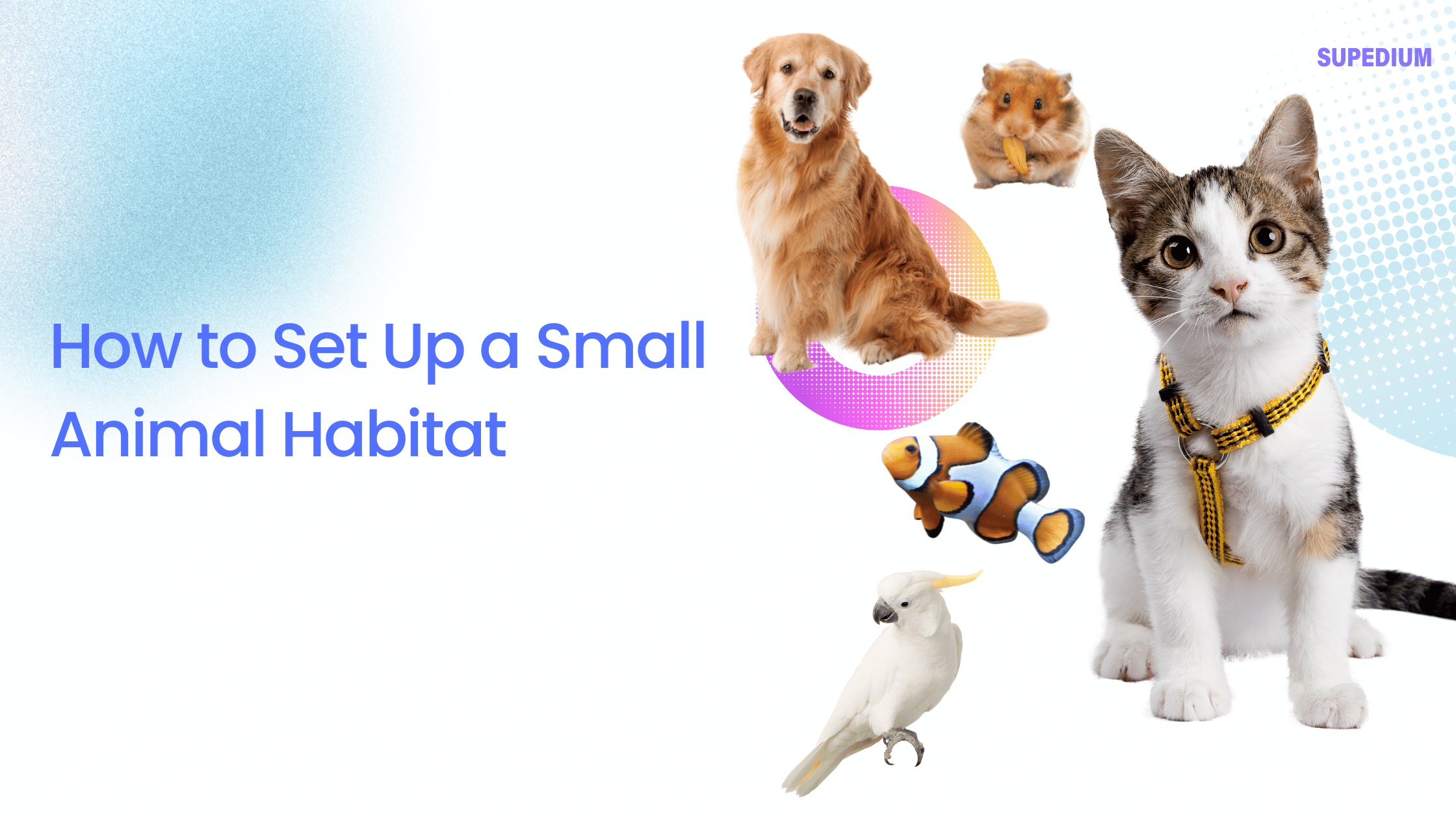Table of Contents
![]()
Creating a suitable habitat for small animals is essential for their health and happiness. Whether you’re welcoming a hamster, rabbit, or guinea pig into your home, providing an environment that mimics their natural habitat can lead to a thriving pet. This guide will walk you through the steps to set up a small animal habitat that meets your pet’s needs.
Choosing the Right Habitat
Types of Habitats
When selecting a habitat, you have several options, each with its pros and cons:
- Cages: Wire cages allow for good ventilation and visibility, while glass aquariums can be visually appealing and easy to clean. Wooden hutches are suitable for outdoor rabbits but may require more maintenance.
- Indoor vs. Outdoor Habitats: Consider your lifestyle and the species you are adopting. Indoor habitats are generally safer and provide a controlled environment, while outdoor setups can offer more space and natural stimulation.
Size Requirements
The size of the habitat is crucial for the well-being of your pet. Different species have different space needs:
- Hamsters: A minimum of 450 square inches of floor space is recommended.
- Guinea Pigs: They require at least 7.5 square feet of living space for one or two pigs.
- Rabbits: Ideally, they should have a habitat that is at least 4 feet by 2 feet, with additional space to roam.
Always consider vertical space and the opportunity for climbing or jumping when designing the habitat.
Essential Components of the Habitat
Flooring
Choosing the right flooring is vital for your pet’s comfort and health:
- Types of Flooring: Opt for safe, non-toxic bedding materials such as paper-based bedding, aspen shavings, or hay.
- Safe Materials: Avoid cedar or pine shavings, which can be harmful to small animals.
Shelter and Hiding Places
Small animals need secure areas to hide and rest:
- Importance of Privacy: Shelters provide a sense of security and help reduce stress.
- Recommended Types: Use tunnels, igloos, or wooden huts to create cozy retreats.
Food and Water Stations
Proper feeding and hydration are key to your pet’s health:
- Types of Food Dishes: Choose heavy, ceramic dishes that are difficult to tip over.
- Water Bottles vs. Bowls: While bottles keep bedding dry, bowls are easier for pets to access. Choose based on your pet’s preference.
Enrichment Items
Mental stimulation is crucial for small animals:
- Toys and Climbing Structures: Offer a variety of toys, such as chew toys, climbing platforms, and tunnels to keep your pet engaged.
- Chewing Items: Provide safe chewing options to promote dental health, such as untreated wood or chew sticks.
Environmental Considerations
Temperature and Humidity Control
Maintaining a stable environment is vital:
- Ideal Ranges: Most small animals thrive in temperatures between 65°F and 75°F, with humidity levels around 30-50%.
- Monitoring Tools: Use thermometers and hygrometers to keep track of conditions.
Lighting
Proper lighting is important for your pet’s circadian rhythms:
- Natural vs. Artificial Light: Ensure your pet receives natural light during the day while providing shelter to escape bright light if needed.
- Day-Night Cycle: Mimicking a natural cycle helps keep your pet’s biological clock in sync.
Ventilation
Good air circulation prevents odors and maintains a healthy environment:
- Importance of Airflow: Ensure that the habitat is well-ventilated, especially in smaller cages, to reduce the buildup of ammonia from waste.
- Preventing Humidity Buildup: Regularly clean the habitat to prevent mold and mildew.
Safety and Hygiene
Choosing Safe Materials
Your pet’s safety is paramount:
- Non-Toxic Materials: Always opt for toys and bedding made from safe materials. Look for certifications indicating that they are pet-safe.
- Avoiding Harmful Chemicals: Ensure that cleaning products are safe for pets or use natural alternatives.
Regular Cleaning and Maintenance
A clean habitat promotes health:
- Frequency of Cleaning: Spot clean daily and perform a thorough cleaning weekly.
- Recommended Cleaning Supplies: Use mild soap and warm water, and avoid harsh chemicals.
Signs of a Healthy Habitat
Monitoring your pet’s well-being is essential:
- Observing Behavior: Healthy animals are active and curious. Changes in behavior can signal discomfort.
- Identifying Potential Health Issues: Look for signs of illness, such as lethargy, changes in appetite, or unusual droppings.
Personalization and Comfort
Adding Personal Touches
Make the habitat unique:
- Decor and Themes: Personalizing the habitat can make it visually appealing and engaging.
- Colors and Patterns: Choose bedding and accessories that reflect your style while ensuring they are safe for pets.
Making the Habitat Cozy
Comfort is key for your pet:
- Soft Bedding Materials: Use comfortable bedding to create a cozy resting area.
- Temperature Regulation: Provide shaded areas and cozy spots for your pet to stay warm or cool as needed.
Transitioning Your Pet to the New Habitat
Tips for Introducing Your Pet
Moving to a new environment can be stressful for small animals:
- Introduction Strategies: Allow your pet to explore the habitat gradually. Start with short supervised visits to help them adjust.
- Monitoring Adjustment: Watch for signs of stress or anxiety, such as hiding or excessive scratching.
Providing Support During the Transition
Help your pet feel secure:
- Routine and Familiar Items: Keep their favorite toys or bedding from their previous home to provide comfort.
- Gentle Interaction: Spend time with your pet, allowing them to acclimate at their own pace.
Conclusion
Setting up a small animal habitat is a rewarding endeavor that significantly impacts your pet’s quality of life. By choosing the right habitat, ensuring a safe environment, and providing enrichment, you can create a thriving space for your furry friend. Remember to research specific needs for different species and adjust your setup accordingly to create a happy and healthy home for your small animal.
Share This





Be the first to comment